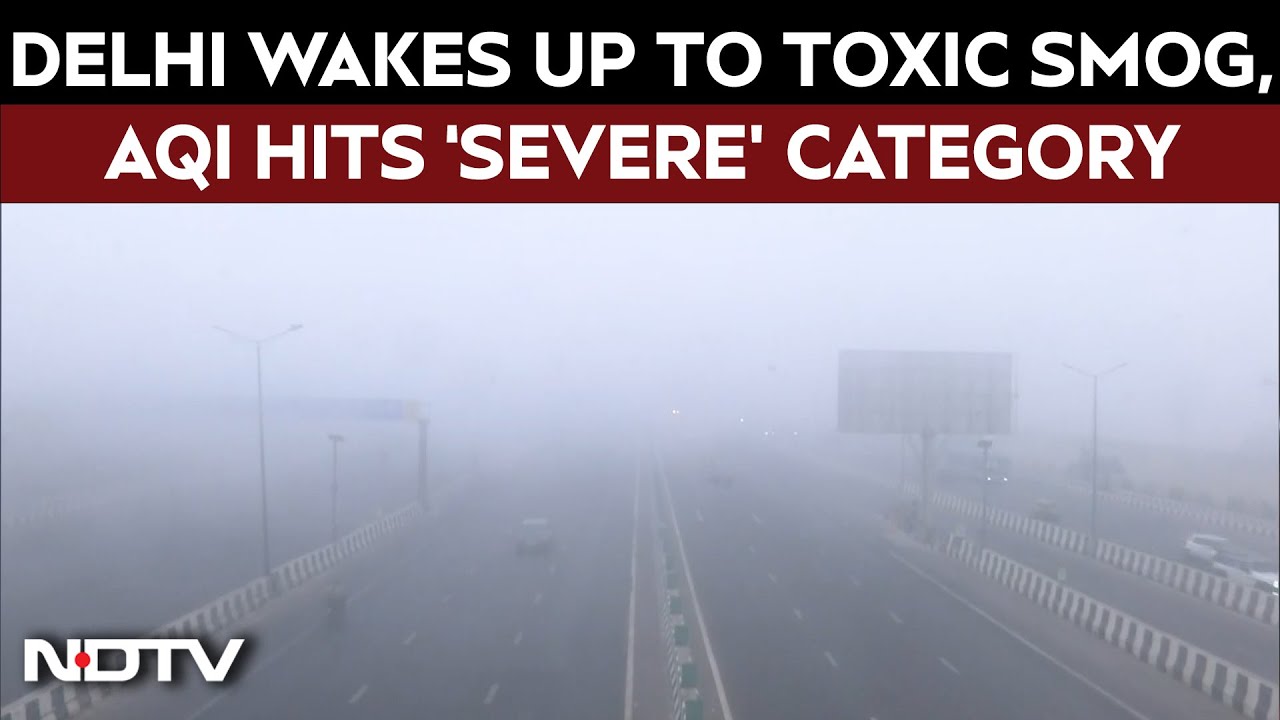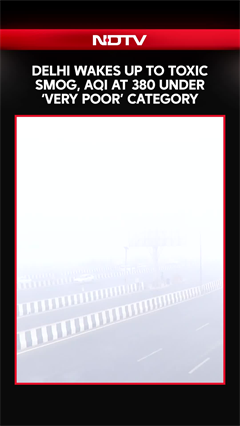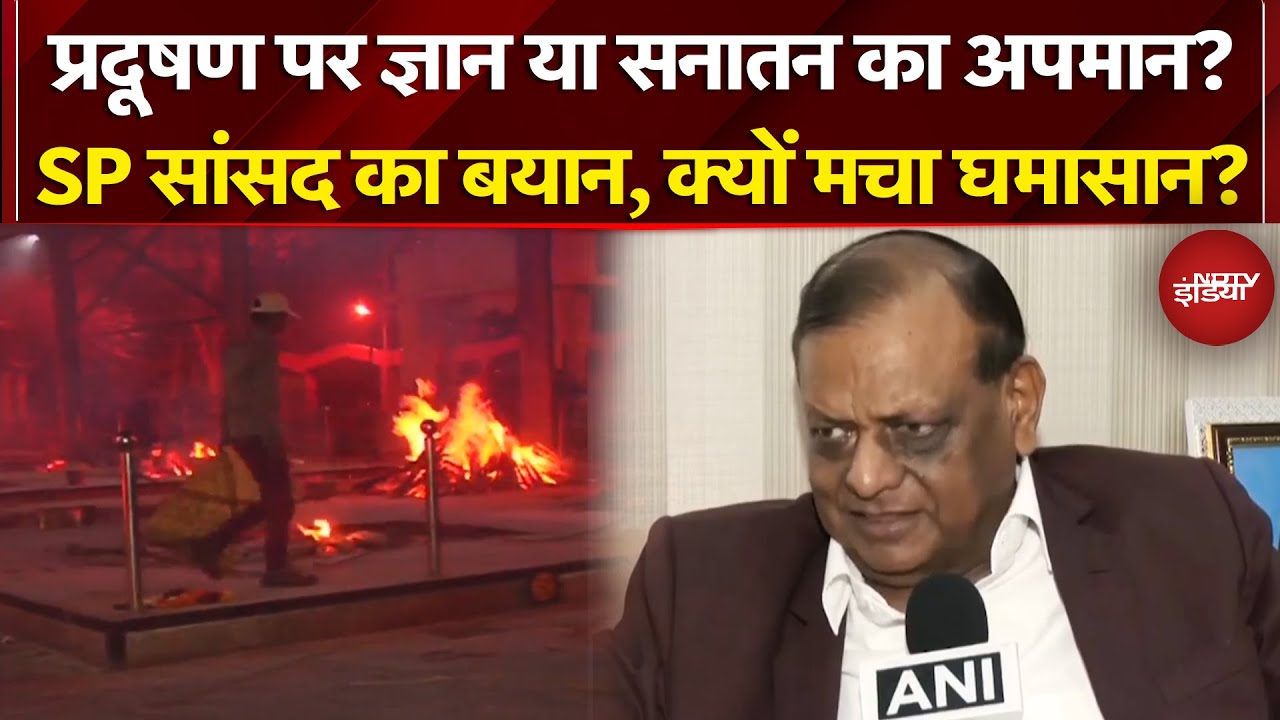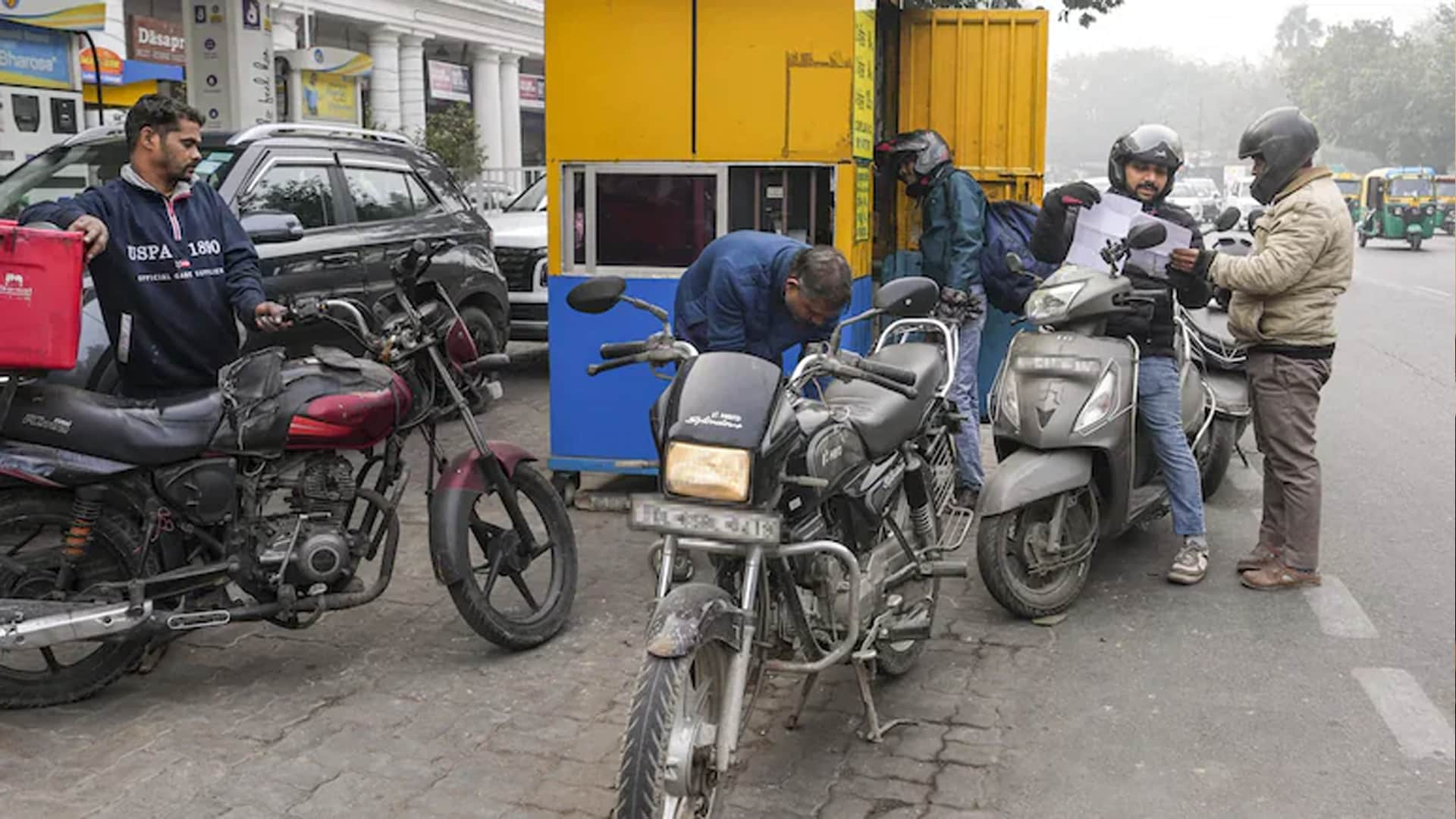- Home/
- Delhi Fights Pollution With Traffic Curbs But Farm Fires Remain Big Threat
Delhi Fights Pollution With Traffic Curbs But Farm Fires Remain Big Threat
Delhi remains wrapped in a blanket of toxic smog with severe pollution forcing schools to suspend primary classes amid health concerns. The overall air quality index (AQI) was recorded at 488 this morning, much above the safe levels prescribed by the World Health Organisation (WHO).
Some of the worst-affected areas in the city include RK Puram (466), ITO (402), Patparganj (471), and New Moti Bagh (488).
The Delhi government has extended the closure of all schools up to class 5 till November 10 in view of the increasing pollution levels. Schools up to classes 6-12 are not required to close, but can switch to online classes if they wish.
The deteriorating air quality has prompted doctors to raise health concerns, including the growing number of respiratory and eye ailments among children and the elderly.
Multiple factors contribute to this now-annual winter air pollution with vehicular emissions, smoke from stubble burning and farm fires, and low wind speed. This year pollution peaked ahead of Diwali and the wedding season, during which crackers become a pollution source.
Big Rise In Farm Fires
The rise is pollution comes with an increase in stubble burning incidents in neighbouring Punjab and Haryana, showed studies by Delhi Pollution Control Committee.
Punjab yesterday reported the highest number of farm fires this season with a sudden surge in stubble burning following a relatively smoke-less October, data showed. There was a 740 percent increase in stubble burning with 1,068 farm fires - the highest in a single day this harvesting season - being recorded on Sunday. On Saturday, only 127 stubble-burning incidents were reported.
With the 3,230 fresh farm fires, the total number of stubble-burning incidents in Punjab so far this season stands at 17,403, according to Punjab Remote Sensing Centre data. The farm fires reported in November constitute 56 per cent of the total stubble-burning incidents this season, data showed, including a steep 57% jump between November 4 and 5.
Action Plan To Fight Pollution
The Centre has put the Graded Response Action Plan (GRAP) into effect at its highest level in Delhi and surrounding cities where the air quality has remained in the "severe plus" category.
The Graded Response Action Plan (GRAP) is a set of anti-air pollution measures established by the Central Pollution Control Board (CPCB). The GRAP has four stages, with Stage IV being the most severe.
The Commission for Air Quality Management (CAQM) yesterday invoked Stage IV of the GRAP in the entire national capital region to prevent further deterioration in the air quality.
Under the new restrictions, trucks have been barred from entering Delhi unless they are carrying essential goods, providing essential services, or are powered by LNG, CNG, or electricity.
Only electric, CNG, and BS-VI diesel light commercial vehicles (LCVs) registered outside of Delhi are allowed to enter the city, except for those carrying essential goods or providing essential services.
All construction and demolition works in Delhi have been suspended, including public projects such as roads, bridges, and power lines.
The Delhi and central governments may allow public, municipal, and private offices to operate with half of their staff working from home.
also read
Thick Smog Blankets Delhi-NCR, Over 100 Flights Cancelled, 50 Trains Delayed
Edited by Aastha AhujaDelhi Government To Install Air Purifiers In 10,000 Classrooms As Pollution Soars
Reported by Ishika Verma, Edited by Amit ChaturvediBattle For Breath: Mumbai's Elite Enclave Turns Pollution Hotspot
Reported by Jitendra Dixit, Edited by Srishti Kapoor
Latest Stories
- Edited by Aastha Ahuja | Saturday December 20, 2025 , New Delhi
The national capital, Delhi, woke up to a thick layer of smog blanketing the city with the Air Quality Index (AQI) at 380, falling under the 'very poor' category.
- Reported by Ishika Verma, Edited by Amit Chaturvedi | Friday December 19, 2025
The government plans a phased rollout, funded through the environment cess, though exact installation timelines have not been announced.
- Reported by Jitendra Dixit, Edited by Srishti Kapoor | Friday December 19, 2025
Air quality in and around Bhakti Park and Wadala Truck Terminal (TT) has plummeted in recent weeks, with AQI levels soaring beyond 300 - classified as "severe".
- Edited by Astitva Raj | Friday December 19, 2025
His post quickly became popular among people who have experienced similar health and safety concerns while living in Delhi.
- Press Trust of India | Friday December 19, 2025 , New Delhi
Commuter awareness rises after Delhi's BS-VI and No PUC, No Fuel enforcement; fuel sales dip in border areas, PUC queues remain steady, says DPDA president.
................................ Advertisement ................................
Latest Videos
Opinion
Blog | Well Done, Delhi. You've Turned Lung Sacrifice Into A Badge Of HonourSaikat Kumar Bose
Monday November 10, 2025Till some years back, Delhiites would ask angry questions to those in power about the capitals annual tryst with toxic air. This has changed. Those in the driving seat dont see the need to answer now.
Opinion | Why Indians Have Just Given Up On Air Pollution CrisisTanushree Ganguly
Friday December 20, 2024While some may argue that people in Delhi are now more aware of air pollution than they were a decade back, my rebuttal would be that awareness does not mean that people are concerned.
Opinion | You Must Outrage Over Filthy Air More Than Once A YearJyoti Pande Lavakare
Tuesday December 10, 2024Delhi welcomed us with monsoon rains and mangos. We were home. Fast forward a couple of years, in the winter of 2012, I found myself in denial about something other parents, mostly expats, were calling toxic air.
Opinion | Delhi's Air Pollution Situation Is Like A Bad MarriageNishtha Gautam
Friday November 22, 2024On a good day, such as today, the AQI reading in Delhi is 407. We are jubilant at the sickly sunshine trickling through the slightly dissipated smog. At least its not 1600.
दिवाली... पराली... सियासी जुगाली!Ashwini kumar
Monday November 18, 2024दिल्ली-एनसीआर में प्रदूषण का समाधान तो आज तक मिला नहीं. हर साल चिंतित होकर हम-आप सांसों की तकलीफ के साथ-साथ दिल और ब्लड प्रेशर के मरीज भी क्यों बनें?


















